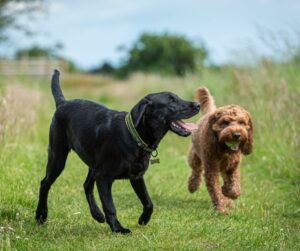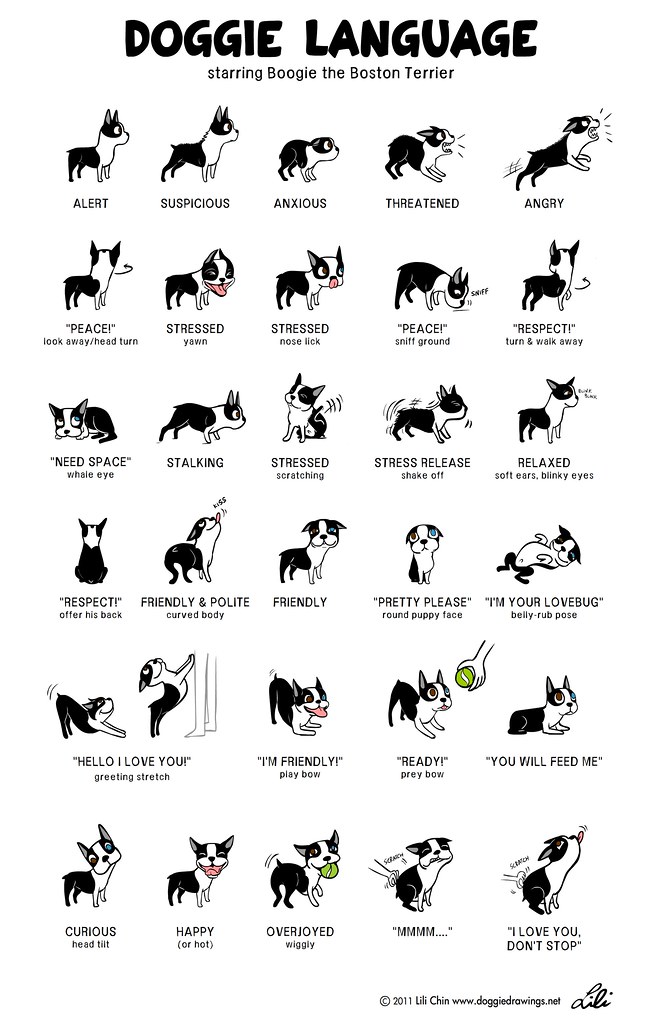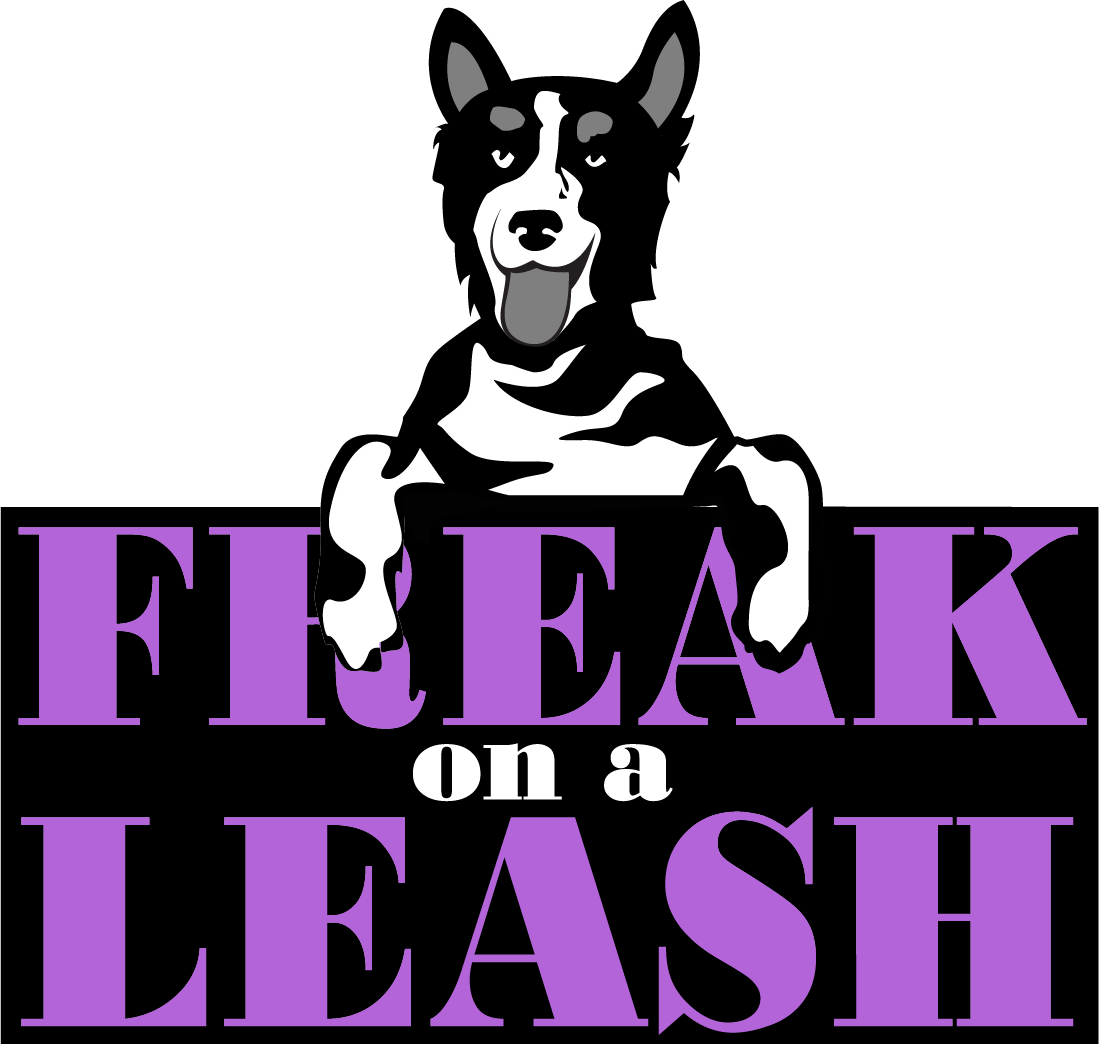Dogs are one of the most beloved pets in the world. They are loyal, friendly and provide great companionship to their owners. However, there are times when they can behave unpredictably, especially when it comes to biting. As a dog owner, it is important to understand why your dog might bite without warning and how you can prevent it from happening.
In this post, we will delve deeper into understanding dog communication. We will discuss key differences between human and canine communication and identify common conflict-related behaviors in dogs. You will also learn about warning signs of aggression in dogs and tips to better understand and respond to your dog’s signals. Remember, as a responsible pet owner, you should always seek professional help if you notice any concerning behavior in your dog. So let’s get started on unraveling the mystery behind why some dogs bite without warning!
 Understanding Canine Communication
Understanding Canine Communication
Canine language is different from human communication, with canines relying more on non-verbal cues. Dogs rely heavily on body language and olfactory cues to express themselves. Recognizing these signals is important in understanding their behavior, and can be crucial for dog owners to prevent potential conflicts. The more you learn about canine communication, the better equipped you will be to interpret your dog’s needs and intentions. Understanding these differences promotes understanding between you and your dog and is a key way to develop a strong bond. It builds effective communication which can greatly enhance the human-dog relationship. By understanding and responding appropriately to your dog’s signals, you can ensure a safer and happier relationship between you and your furry friend.
The Importance of Body Postures and Olfactory Cues in Canine Language
Dogs communicate through a combination of body postures and olfactory cues, such as sniffing and scent marking. They rely on visual and scent signals to effectively communicate with other dogs and humans. By paying attention to a dog’s body language, we can interpret their emotions and intentions much more accurately. For example, a hard stare or a growl can be indicators of aggression, asking for space, or discomfort. Recognizing and understanding these signals can help dog owners create a safe and harmonious environment for their furry friends. Incorporating obedience training and providing positive reinforcement can also help dog owners can enhance their communication with their dogs and promote a mutually respectful relationship.
Misinterpreting or Missing Canine Signals
Misunderstanding dog body language can lead to conflicts and escalate aggression. Lack of knowledge about canine signals may result in humans misinterpreting or missing subtle warning signs from dogs. Educating ourselves about canine communication reduces misinterpretation! Check out the illustration below for some common postures and behaviors of dogs in various emotional states.

Recognizing Conflict-Related Behaviors in Dogs
Dogs often display conflict-related behaviors when confronted with challenging situations. Recognizing these behaviors can aid in preventing aggressive incidents and ensuring the safety of both humans and dogs. Some common conflict-related behaviors include growling, snapping, and freezing. Dogs may exhibit these behaviors when they feel threatened or fearful, signaling their internal conflict. Identifying these behaviors allows for timely intervention and de-escalation, helping to diffuse the potentially dangerous situation. As responsible dog owners, it’s important to be aware of these signs and understand what they mean. By recognizing and responding appropriately to conflict-related behaviors, dog owners can help create a safe, healhy environment for their pets and those around them.
How Do Dogs Express Their Internal Conflict?
Dogs communicate feelings of internal conflict through contradictory body language cues, such as lip licking, yawning, or turning away. These subtle signs indicate a dog’s struggle and discomfort. Recognizing and understanding these cues can prevent potential escalation to aggression.
Warning Signs of Aggression in Dogs
Recognizing warning signs is imperative for preventing aggressive incidents in dogs. As dog owners, it is important to be aware of the subtle changes in body posture or facial expressions that may indicate aggression. Growling, snapping, or lunging are clear signs that a dog is feeling aggressive and should not be approached. Raised hackles and direct eye contact can also be indicators of aggression. Understanding these warning signs is key to keeping both humans and dogs safe. If you notice these behaviors in your dog, please consult a vet or a professional dog trainer who can help address any underlying issues. By being attentive to these warning signs, we can change a dog’s feelings or the environment to avoid aggressive behaviors.
 What are the Common Preceding Signs of an Aggressive Event?
What are the Common Preceding Signs of an Aggressive Event?
Common preceding signs of an aggressive event in dogs include a stiff body posture, intense staring, raised hackles, bared teeth, and a raised tail. Dogs may also give vocal warnings like growling or barking. Recognizing these signs can prevent escalation and potential harm.
Improving Human Understanding of Canine Language
By educating ourselves on canine communication, we can decipher the signals that dogs use to express their emotions and intentions. Professional training can enhance our comprehension of dog behavior, allowing us to respond appropriately in different situations and prevent bites and aggression.. Consulting a veterinary behaviorist can provide valuable insights into the complexities of canine body language and helps address behavioral issues effectively. Learning about dog body language, such as growling, hard stares, and raised hackles, helps us recognize signs of aggression and potential conflicts. This knowledge empowers us to understand our dog’s needs and prevent aggressive incidents.
Tips to Better Understand and Respond to Your Dog’s Signals
Start by familiarizing yourself with common signals such as growling, barking, and a hard stare, as these can indicate discomfort or agitation. Identify triggers that may provoke your dog and avoid putting them in those situations. If you’re unsure or struggling to interpret their behavior, don’t hesitate to seek professional help from a veterinarian or a behavior consultant. Positive reinforcement training techniques are a key way to discourage biting behavior, emphasizing reward and redirection instead of punishment. Remember to never physically harm your dog for biting; redirect their behavior and reinforce positive actions. Understanding your dog’s signals is pertinent for a harmonious relationship. By learning to read your dog’s body language and communication signals, you can effectively respond and prevent potential biting incidents.
Does Every Dog Show Warning Signs Before Biting?
Although most dogs exhibit warning signs before biting, some may not due to various reasons. Certain breeds or individual dogs may have a higher tendency to bite without clear warnings. Dogs in pain or extreme stress may bypass warning signals and resort directly to biting. Each dog is unique, and their behavior can be influenced by individual experiences or circumstances. Responsible dog ownership and preventive measures are essential for reducing the risk of bites.
How Can You Prevent Your Dog from Biting?
Most dogs will try to avoid biting and show many behaviors to deescalate a situation or gain space. By reading the subtle signs that your dog is uncomfortable and changing the environment you will see that biting can be prevented. Only few dogs will truly bite without warning. Common reasons for bites without warnings are:
- Warning signs have been punished. Don’t punish or yell at your dog for growling or showing other signs of being uncomfortable. These are your dog’s warning signs and a cue for you to change something.
- Similar to punishing warning signs is not respecting them. If turning away, lip licking and freezing hasn’t worked to stop the threat in the past, your dog might skip those signs and go directly to a bite or snap.
- Pain: dogs in pain will show less or no warning before a bite. If you think pain could be a factor in your dog’s aggression, seek out veterinary help to find the cause.
When Should You Seek Professional Help?
If your dog’s aggressive behavior becomes severe, frequent, or escalates, it is important to consult with a professional. Seeking help from a veterinary behaviorist is necessary when your dog’s aggression poses a risk to others or compromises their well-being. Professional guidance can address underlying issues contributing to the aggression, ensuring your dog’s safety.
Conclusion
Understanding canine communication is crucial in preventing dog bites and ensuring the safety of both humans and dogs. Dogs communicate through body language, olfactory cues, and vocalizations, and it is important for us to learn how to interpret these signals accurately. Misinterpreting or missing canine signals can lead to misunderstandings and potentially dangerous situations.
Conflict-related behaviors, such as resource guarding or fear aggression, are often the underlying reasons behind dog bites without warning. By recognizing these behaviors and understanding their causes, we can take proactive steps to address them and prevent aggressive incidents.
Improving our understanding of canine language requires observing and familiarizing ourselves with our dogs’ body language. This allows us to recognize warning signs of aggression and respond appropriately. Additionally, seeking professional help is essential in complex cases or when there is uncertainty about a dog’s behavior.
Remember, prevention is key! By providing proper training, socialization, and a safe environment, we can minimize the risk of dog bites and foster a harmonious relationship between humans and dogs.

